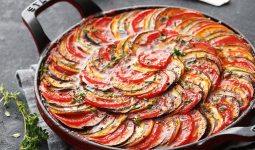Any cook will tell you that recognizing the quality of the products you’re buying is the key to improving your cooking.
While purchasing the different types of pork cuts from animals like cattle or pork can first be scary, becoming more knowledgeable about the meat you’re purchasing will enhance the flavor of your meals.
You’ve come to the right place if you want to start by learning about the various different types of pork cuts.
Our manual will provide all the fundamental information on the different types of pig cuts, along with answers to some often-asked questions, so you may confidently shop for fresh ingredients.
Let’s go!
1. Head
Head Cut is starting our list of different types of pork cuts. In that we can use almost every cut of the meat, including the head cut, pork is incredibly useful.
This cut of pork is used to produce brawn, soups, or stocks (also known as headcheese).
A unique cut of meat called pork jowl is extracted from the cheek of the pig and is then prepared as a fresh cut or cured meat.
In the United States, it’s frequently called “jowl bacon” by your butcher or “hog jowl” in the South.
2. Shoulder
The shoulder cut is also one of the different types of pork cuts. You can ask your butcher for pieces of either the picnic shoulder or the pork butt (also known as the Boston butt) from the primal shoulder cut.
Although they come from somewhat different locations on the animal, both can be utilized in cooking in similar ways but have different properties.
3. Tenderloin
This tenderloin cut is particularly sensitive, lean, and pale pink with a fine texture.
It is much smaller than a pig loin roast, long, slender, and tapering at one end; as a result, it cooks fast and is a suitable option for midweek dinners.
4. Belly
The belly cut, which comes down below the loin, offers a wide variety of extremely sensitive meat. Rich and fatty cuts come from this area of the pig.
Excellent types of pork cuts are available, especially if you want to host a sizable audience.
5. Leg
Contrary to popular belief, the term “pork leg” in butchering really refers to the animal’s hindquarters.
Given the part of the pig it comes from, the meat is slightly leaner here, but it’s still a popular cut, especially during the holidays.
6. Pork Loin
The entire backside of the animal is referred to as pork loin, not to be confused with pork tenderloin, which is a retail cut from this primal cut.
It produces some of the leaner meat and some of the most sought-after retail cuts at the butcher.
7. Pork Butt
Pork butt is also on our list of different types of pork cuts. It is a little more sensitive because it is extracted from the animal’s shoulder blade, which is located behind its neck.
It contains a little less muscle because the pig doesn’t use that section as much, and butchers frequently sell it in huge chunks for slow cooking or as a 1/2-inch bone-in steak.
8. Pork Picnic
Because more muscle is used in this section of the animal, the next shoulder cut (done immediately beneath the butt cut) is a little tougher.
It must be cooked slowly and low to make anything from this cut soft enough to eat.
9. Baby Back Ribs
These thin, meaty slabs of different types of pork cuts are located close to the pig’s backbone in the rib cage.
They cook rapidly and are prized for their delicious, juicy meat. At least eight ribs make up a whole rack.
Choose a rack that weighs no more than 2 pounds for the juiciest meat (which should serve two people).
10. Spare Ribs
Spare ribs are highly flavorful because of a significant amount of fat, even though they are not as meaty as baby-back ribs.
They originate from a pig’s lower rib cage or underbelly, which is also where bacon is derived.
These different types of pork cuts are large and irregularly shaped.
At least 11 ribs make up a whole rack, which weighs 3 to 4 pounds and can serve two or three people.
11. Hock
Hock cut is the last on our list of different types of pork cuts. The lower part of the hog leg is used to create ham hocks (the hock cut).
They don’t have a lot of flesh, but they do have some fat, skin, connective tissue, a small amount of meat, and a thick bone that is surrounded by other tissue. (
Many paleo diet proponents recommend cooking with collagen to reap the nutrient’s benefits and strengthen your nails, bones, joints, etc.
The finest applications for this cut are long-cooking foods like braised greens, soups, stocks, and pots of beans.
A deep, salty, smoky flavor will gradually ebb and spread from the hock. You can strain out any remaining fatty components and separate the hock.
Conclusion
Being able to choose the ideal pig cut is more difficult than simply knowing that you want to enjoy a delicious hog roast or pork tacos.
Common different types of pork cuts have been broken down above on our blog list, along with information on what they are, how to prepare them, and which dishes they work best with.
Our guide to the many sorts of pork will help you choose the best cut for your occasion, whether you’re preparing your main course to pair with those delectable pulled pork sides or hoping to try a new pig ramen recipe.
Frequently Asked Questions
Ham originates from the “pork leg” primal cut, as was previously mentioned. It is obtained from the animal’s back end and is available in three different forms: spiral cut, which still contains some bone, and boneless.
Typically, it’s the pork tenderloin, also known as the tender or filet. Since it has some premium meat to offer, many of the other loin cuts err on the costly side.
Are you familiar with Italian cuisine and curious about coppa? It is created from meat near the head of a pig’s shoulder.








